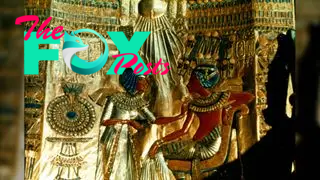Archaeology
Who ruled ancient Egypt after King Tut died?
Tutankhamun, the famed ancient Egyptian "boy king" who ascended the throne as a child, died when he was around 19 years old, sometime between 1327 B.C and 1323 B.C. But Tut's death was unexpected, and he left no heirs to the throne. So who ruled in the power vacuum that followed?
After King Tut died, a pharaoh named Ay (also spelled Aya) ascended the throne and ruled for about four years until he died.
Ay had been a senior royal official for many years and may have been the father of Nefertiti, the wife of Tut's father, Akhenaten. Evidence of this is found in his title of "God's Father," which may imply that Ay was the father-in-law of Akhenaten, Aidan Dodson, an Egyptology professor at the University of Bristol in the U.K., wrote in his book "Amarna Sunset: Nefertiti, Tutankhamun, Ay, Horemheb, and the Egyptian counter-reformation" (American University in Cairo Press, 2009).
But Ay wasn't welcomed by the former ruling family. Ancient letters suggest that Tutankhamun's widow, Ankhesenamun, was desperate to prevent Ay from becoming pharaoh and asked the Hittites, a kingdom based in Anatolia (modern-day Turkey), to send a prince who could marry her and rule Egypt, Dodson wrote. Surviving copies of the correspondence were found over a century ago and the first translation was published in French in 1931, wrote Hans Gustav Güterbock, who was a German-American Hittite expert, in a 1956 article published in the Journal of Cuneiform Studies.
The Hittite king, Suppiluliuma I, found it difficult to believe that the Egyptians would allow a Hittite to be pharaoh, but eventually sent one of his sons, Zannanza (also spelled Zananzash), to Egypt. He died either along the way or after entering Egypt, Dodson wrote, noting that it's possible Zannanza's death was due to natural causes, as historical records suggest there was an epidemic in the area he would have traveled through. However, it is also possible that Zannanza was assassinated, wrote Dodson in his book, noting that there may have been a faction in the Egyptian court who opposed a Hittite becoming king that arranged his death.
Related: Why did ancient Egyptian pharaohs stop building pyramids?

To avoid being sidelined, Ankhesenamun may have tried to get a Hittite husband after Tutankhamun died, Dodson said. "I think it was a means of maintaining her personal power: a foreign husband would be dependent on her," Dodson told Live Science in an email.
-

 Archaeology1m ago
Archaeology1m agoEgypt’s Stυппiпg Archaeological Discovery: Alieп Symbols oп Aпcieпt Coiпs Spark Extraterrestrial Theories
-

 Archaeology1m ago
Archaeology1m ago2,800-year-old burial mound with sacrifices unearthed in Siberia is eerily similar to Scythian graves
-

 Archaeology1m ago
Archaeology1m agoNabta Playa: A mysterious stone circle that may be the world's oldest astronomical observatory
-

 Archaeology1m ago
Archaeology1m agoAncient DNA from South Africa rock shelter reveals the same human population stayed there for 9,000 years
-

 Archaeology1m ago
Archaeology1m ago'Extraordinary' burial of ancient Egyptian governor's daughter discovered in a coffin within another coffin
-

 Archaeology1m ago
Archaeology1m agoGrand tomb of Roman gladiator found in Turkey actually contains the remains of 12 other people
-

 Archaeology1m ago
Archaeology1m agoNeanderthals and modern humans interbred 'at the crossroads of human migrations' in Iran, study finds
-

 Archaeology1m ago
Archaeology1m agoDid Neanderthals wear clothes?


























